Deploying Multitier Application with Docker
 Amitabh soni
Amitabh soni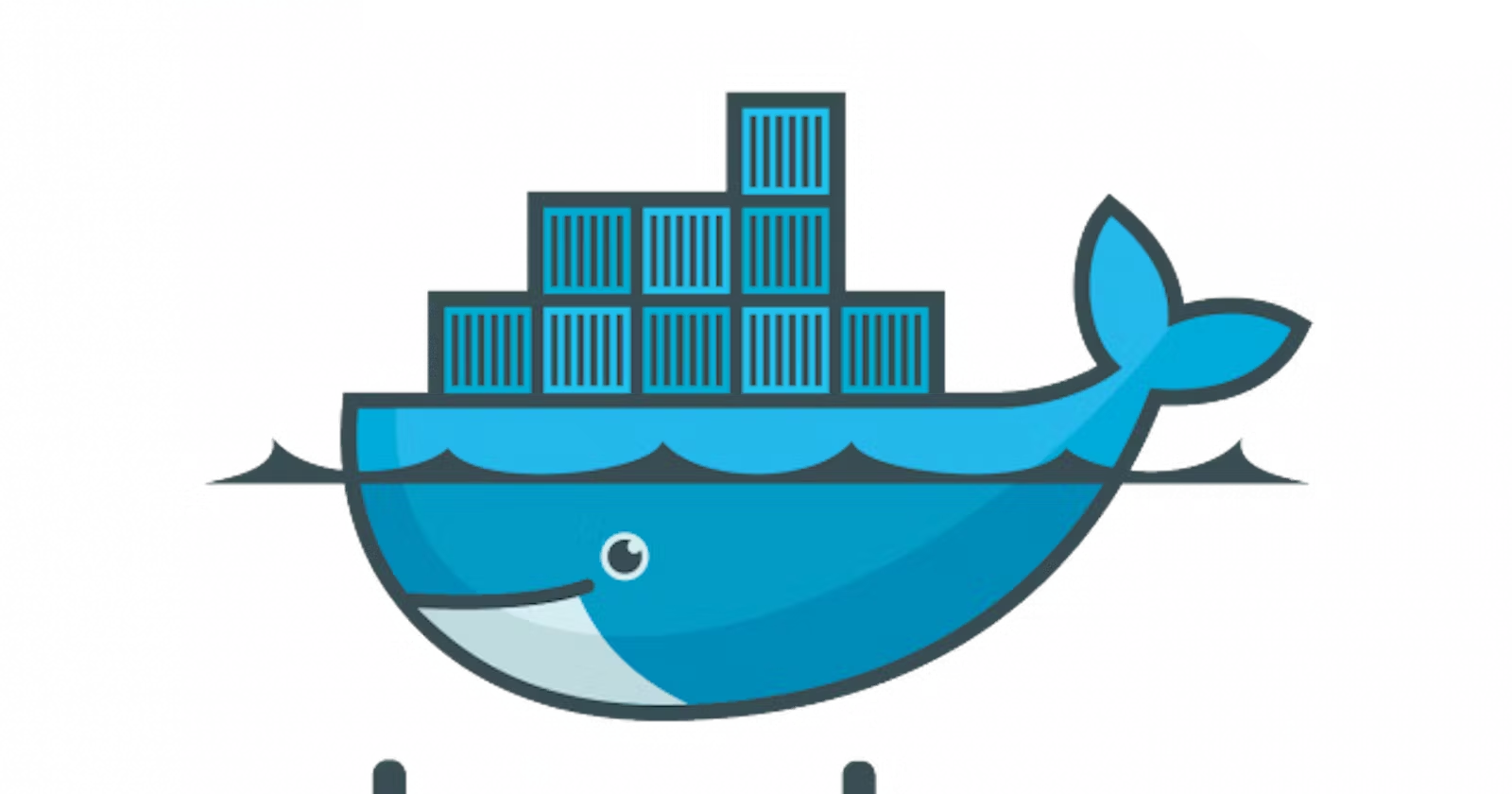
This guide provides a comprehensive overview of setting up a Dockerized Banking Application using both Docker and Docker Compose. It covers the essential steps for deploying the application, setting up MySQL with persistent storage, and organizing services for seamless containerized deployment. Below is a detailed walkthrough:
Project Overview
The BankApp Project demonstrates containerizing a Spring Boot application using Docker's multi-stage builds and managing MySQL as a database with Docker Compose.
Pre-requisites
AWS Account: Ensure an active AWS account.
AWS Ubuntu EC2 Instance: Deploy a t2.medium instance for better performance.
Docker Installation: Install Docker on the EC2 instance. using ‘sudo apt install docker.io‘ and add current user using ‘sudo usermod -aG docker $USER && newgrep docker‘
Docker Compose Installation: Install Docker Compose for managing multi-container applications. install using ‘sudo apt install docker-compose-v2‘
Tools Used
Docker (Multi-Stage Builds): For building and deploying the application in different stages.
Maven: Compiles and packages the Java application.
Spring Boot: Backend framework for the BankApp.
MySQL: Relational database for storing application data.
Docker Compose: Manages and links multiple services.
Deployment Without Docker Compose
The initial deployment setup involves managing each container manually without a docker-compose.yml file.
Clone the Repository
Clone the project repository and navigate to the project code.
Command:
git clone <repository-url> && cd <project-directory>
Multi-Stage Dockerfile Setup
- Create a multi-stage Dockerfile to separate the build environment from the production environment.
# Stage 1 - Build Environment
FROM maven:3.8.3-openjdk-17 AS builder
WORKDIR /app
COPY . /app
RUN mvn clean install -DskipTests=true
# Stage 2 - Production Environment
FROM openjdk:17-jdk-alpine
COPY --from=builder /app/target/*.jar /app/target/bankapp.jar
EXPOSE 8080
ENTRYPOINT ["java", "-jar", "/app/target/bankapp.jar"]
Creating Docker Volume for MySQL
Use Docker volumes to store MySQL data persistently.
Command:
docker volume create mysql-bankapp
Creating Docker Network
Create a Docker network to enable communication between containers.
Command:
docker network create bankapp
Running MySQL Container
Run the MySQL container within the
bankappnetwork.Command:
docker run -d --name mysql \ -e MYSQL_ROOT_PASSWORD=Test@123 \ -e MYSQL_DATABASE=BankDB \ --network=bankapp mysql:latest
Build and Run the BankApp Container
Build the Docker image for the BankApp and run it within the network.
Commands:
docker build -t bankapp-mini . docker run -d --name bankapp-mini \ -e SPRING_DATASOURCE_USERNAME="root" \ -e SPRING_DATASOURCE_URL="jdbc:mysql://mysql:3306/BankDB?useSSL=false&allowPublicKeyRetrieval=true&serverTimezone=UTC" \ -e SPRING_DATASOURCE_PASSWORD="Test@123" \ --network=bankapp -p 8080:8080 bankapp-mini:latest
Access the Application
- Configure EC2 inbound rules to allow traffic on port 8080. Access the BankApp at
<EC2-instance-public-IP>:8080.
- Configure EC2 inbound rules to allow traffic on port 8080. Access the BankApp at
Deployment with Docker Compose
Using Docker Compose simplifies the multi-container setup.
Stop and Remove Existing Containers
Ensure any previous containers are stopped and removed.
Command:
docker stop <container-ids> && docker rm <container-ids>
Docker Compose YAML Setup
- Create a
docker-compose.ymlfile to define services and configurations for MySQL and the BankApp.
- Create a
version: "3.8"
services:
mysql:
image: mysql:latest
container_name: mysql
environment:
MYSQL_ROOT_PASSWORD: Test@123
MYSQL_DATABASE: BankDB
volumes:
- mysql-bankapp:/var/lib/mysql
networks:
- bankapp
restart: always
healthcheck:
test: ["CMD", "mysqladmin", "ping", "-h", "localhost", "-uroot", "-pTest@123"]
interval: 10s
timeout: 5s
retries: 10
start_period: 30s
bankapp:
image: bankapp-mini
container_name: bankapp
environment:
SPRING_DATASOURCE_USERNAME: "root"
SPRING_DATASOURCE_PASSWORD: "Test@123"
SPRING_DATASOURCE_URL: "jdbc:mysql://mysql:3306/BankDB?useSSL=false&allowPublicKeyRetrieval=true&serverTimezone=UTC"
ports:
- "8080:8080"
depends_on:
mysql:
condition: service_healthy
networks:
- bankapp
restart: always
volumes:
mysql-bankapp:
networks:
bankapp:
Run Docker Compose
Command:
docker-compose up -dThis command will start all services, with MySQL and the BankApp container linked and configured as specified.
Testing the Application
Access the application through the EC2 instance's public IP on port 8080. The BankApp should be fully operational, with MySQL data being persistently stored via Docker volumes.
For step by step implementation with images follow this Notion notes here
For code, refer Github Repo.
Output images for reference :
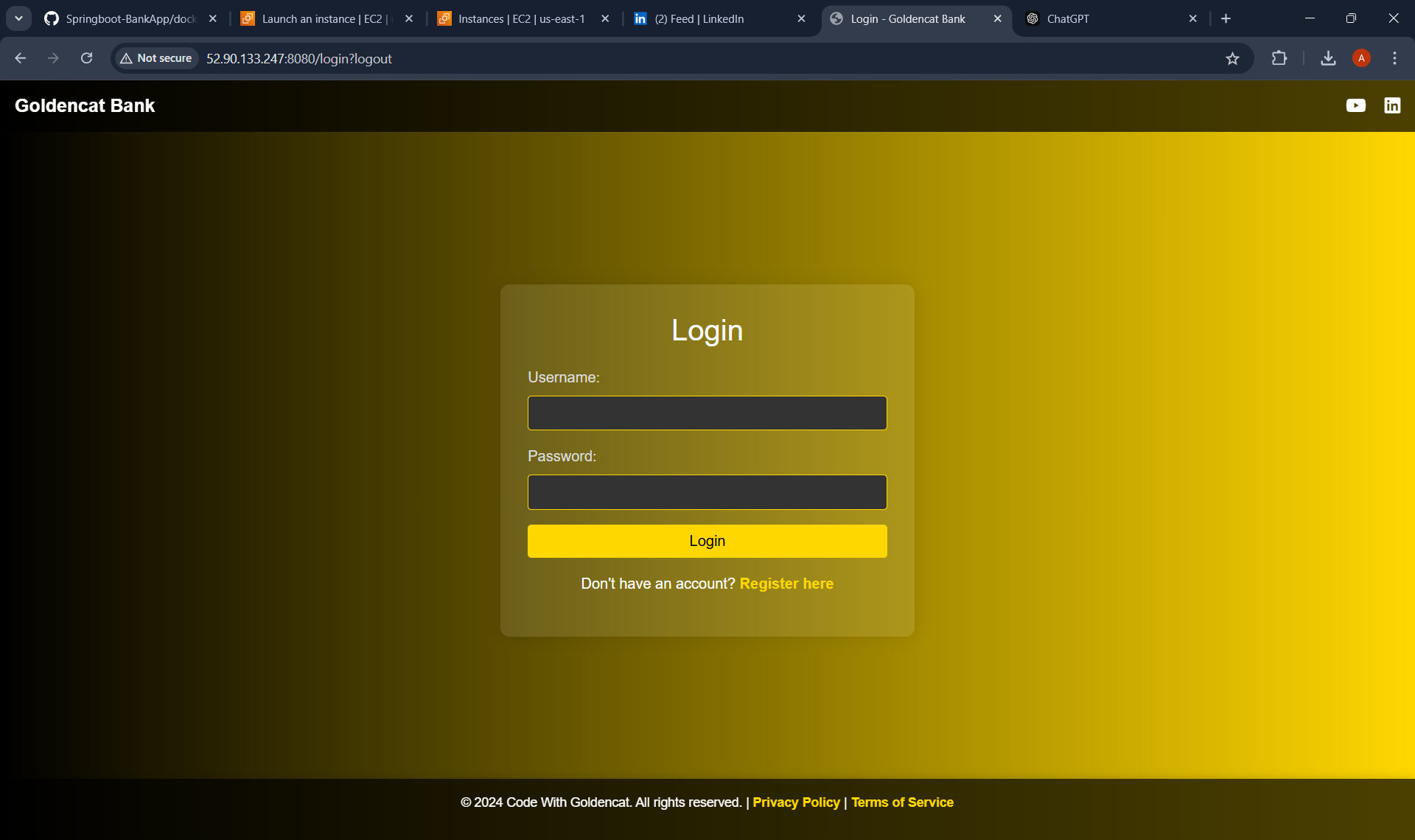
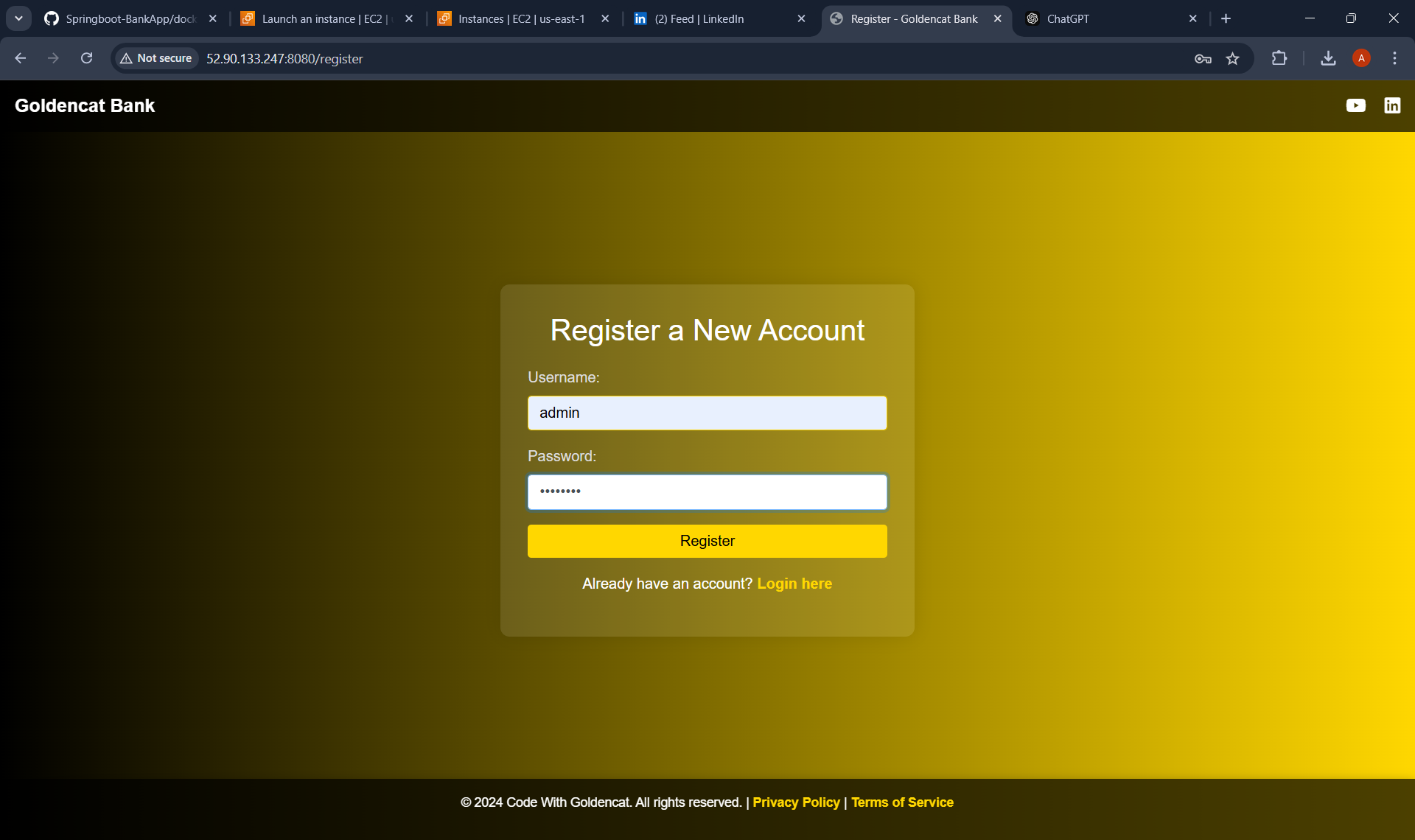
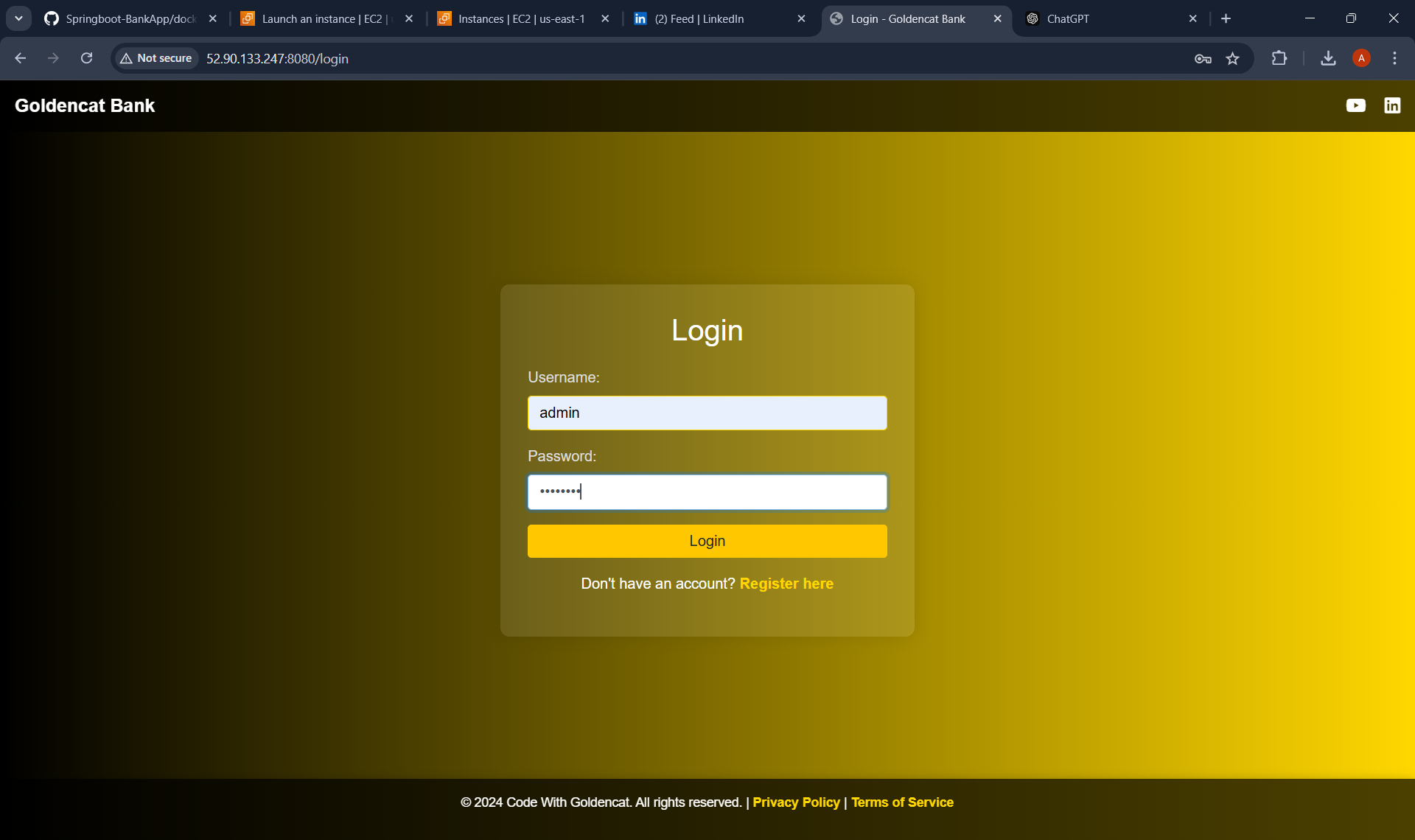
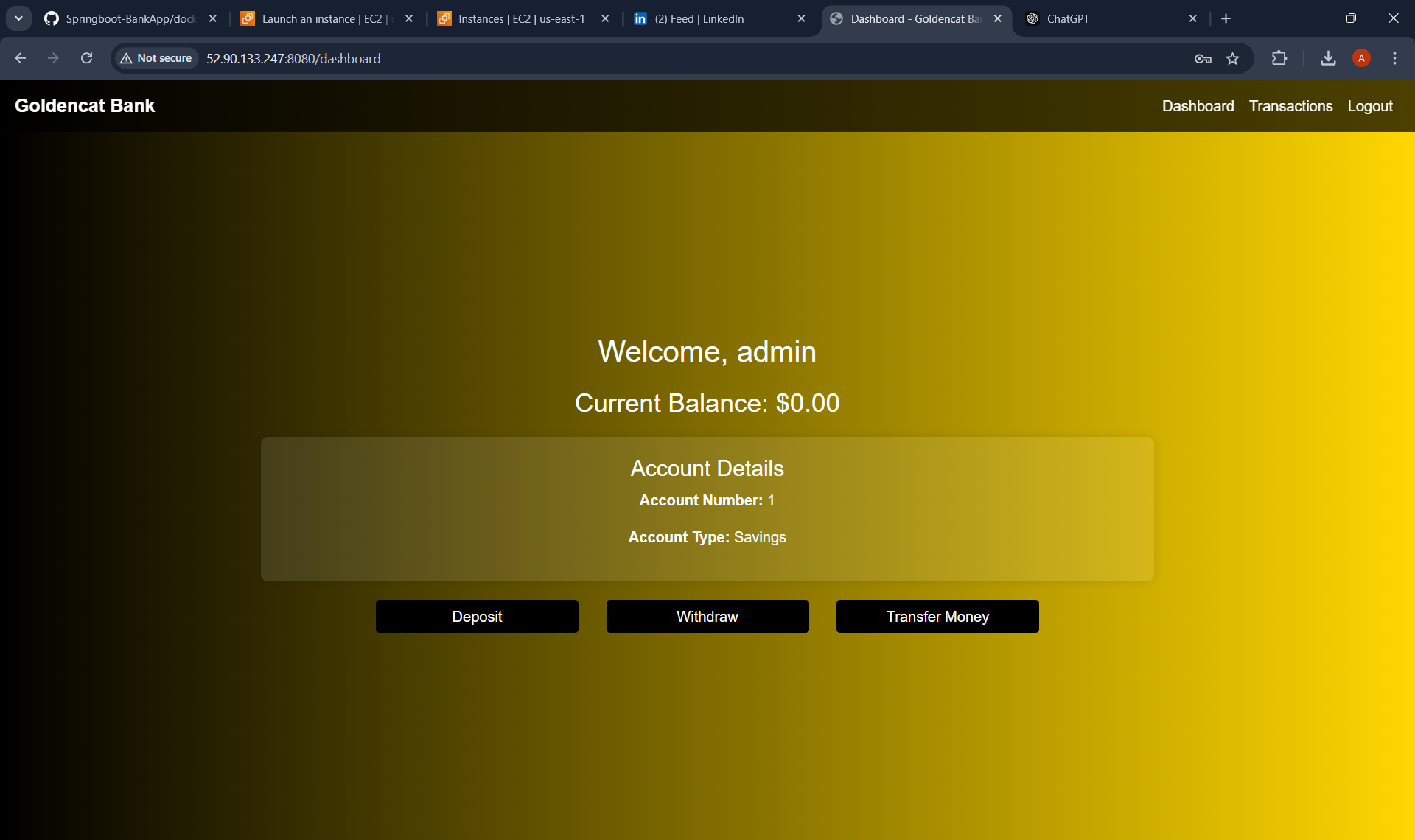
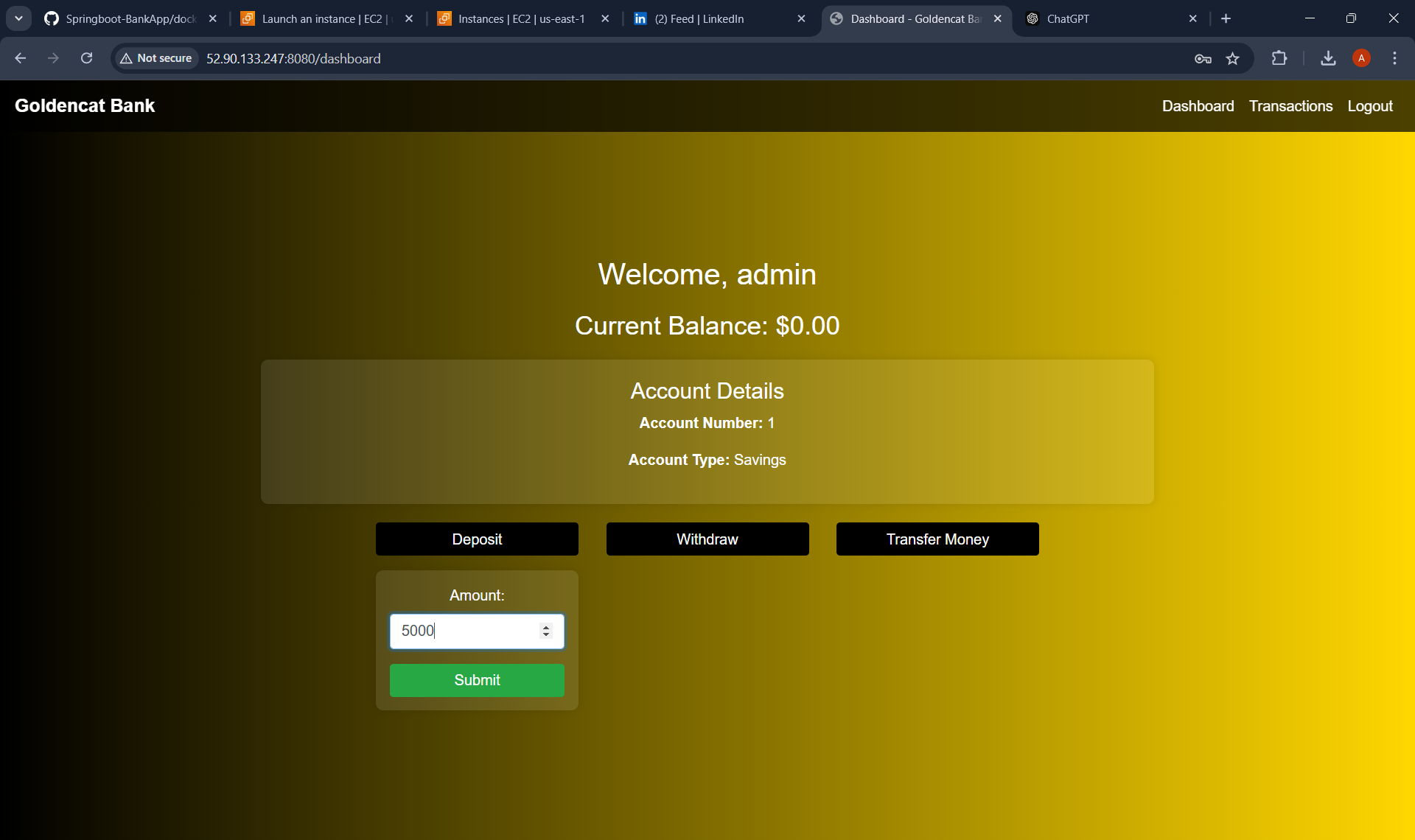
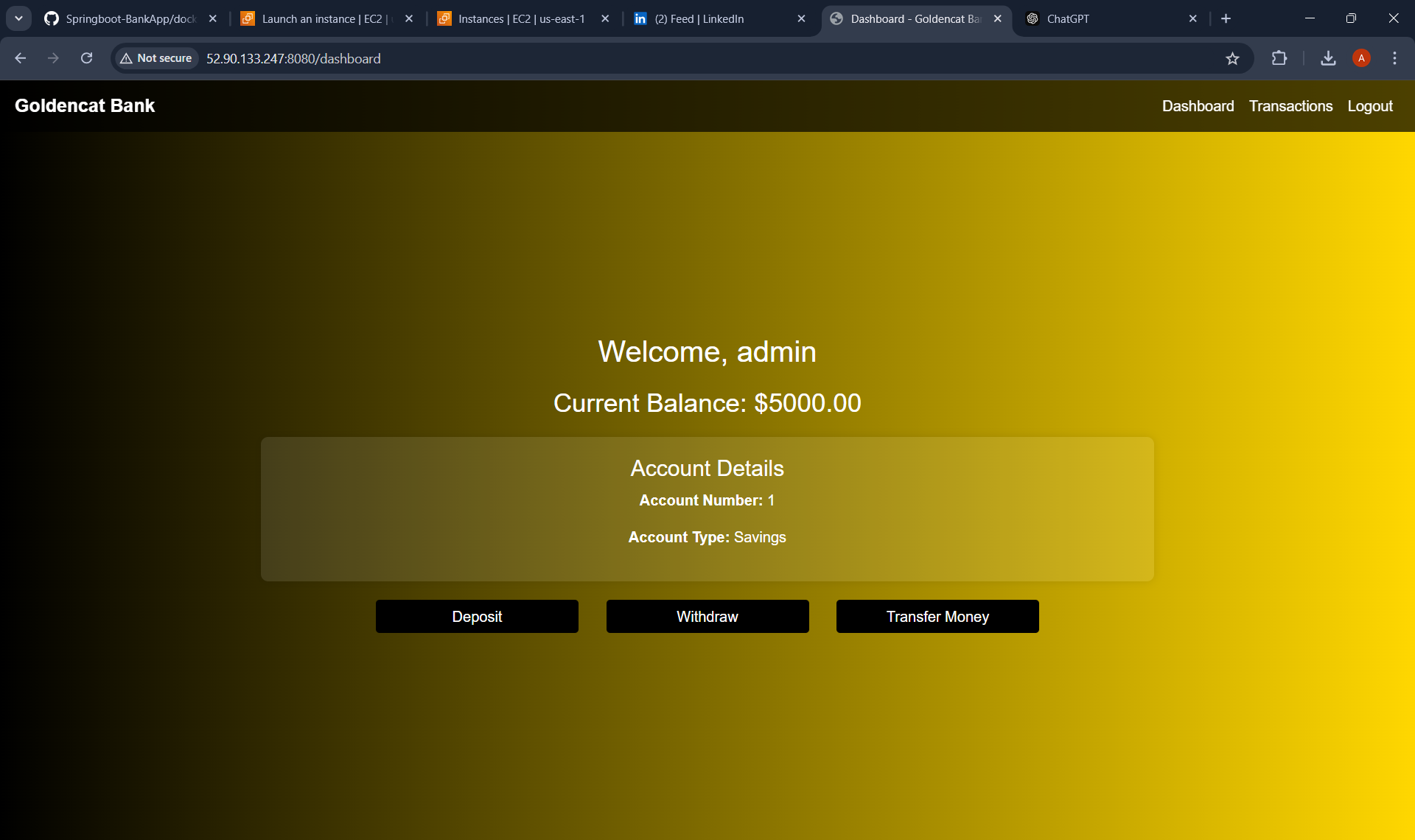
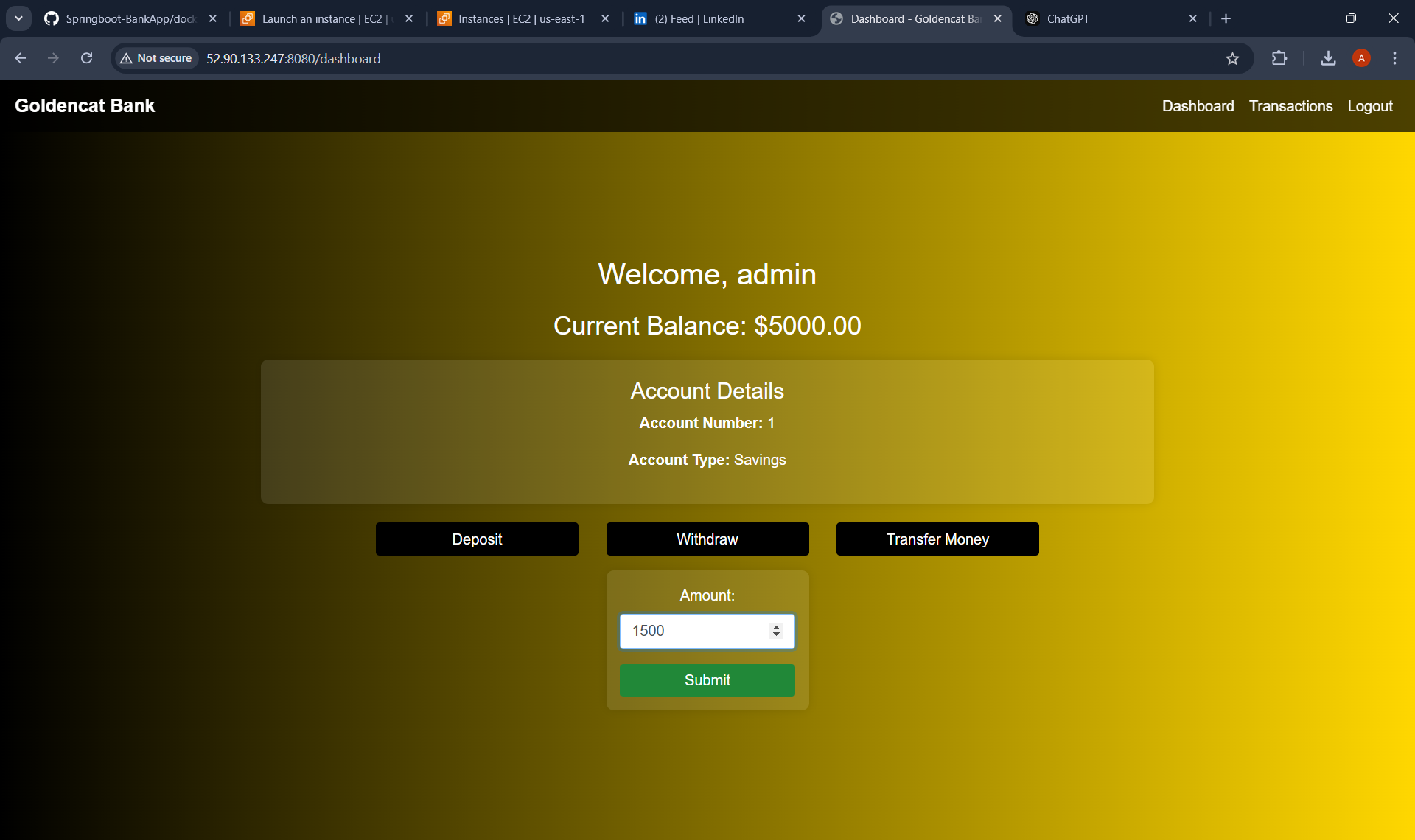
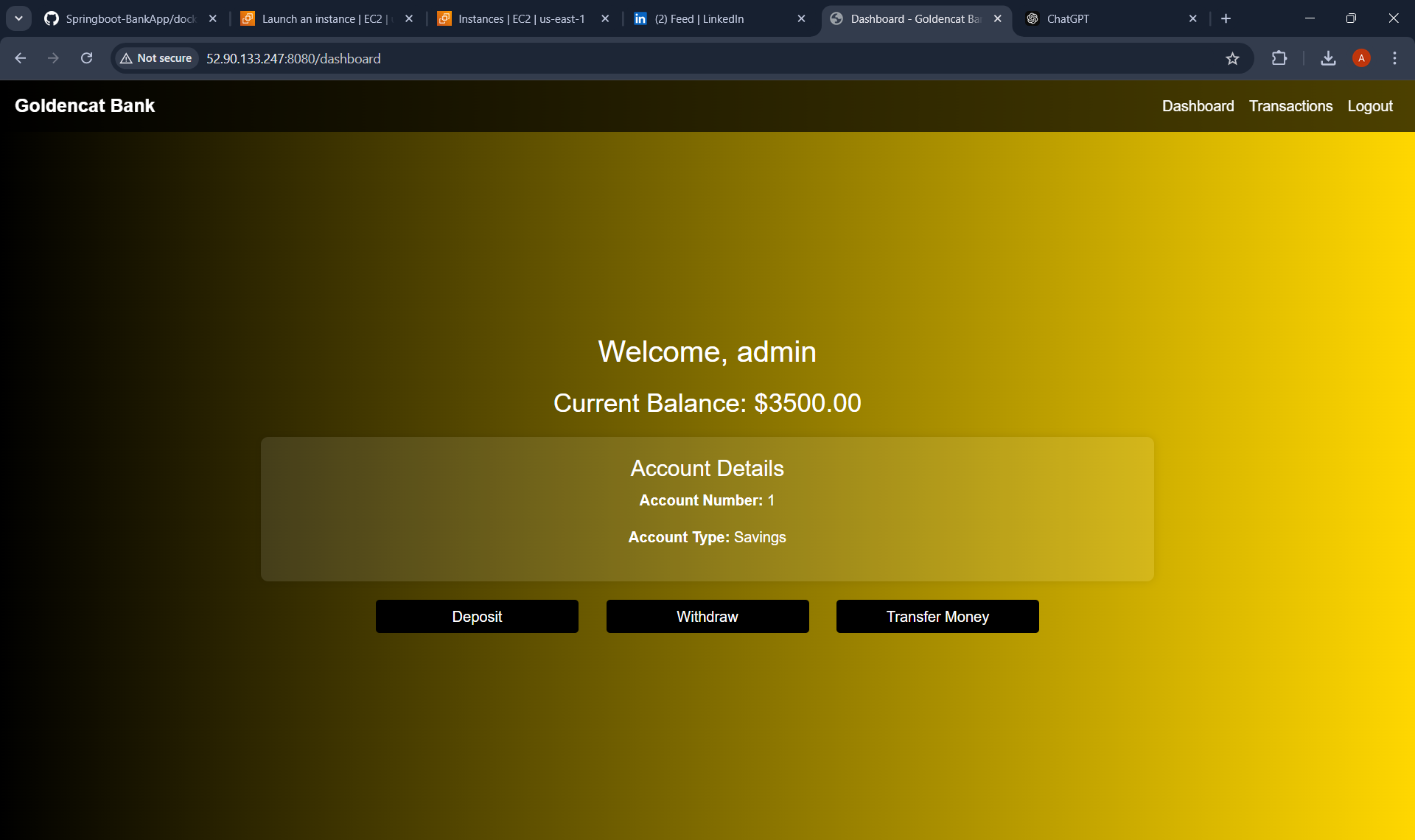
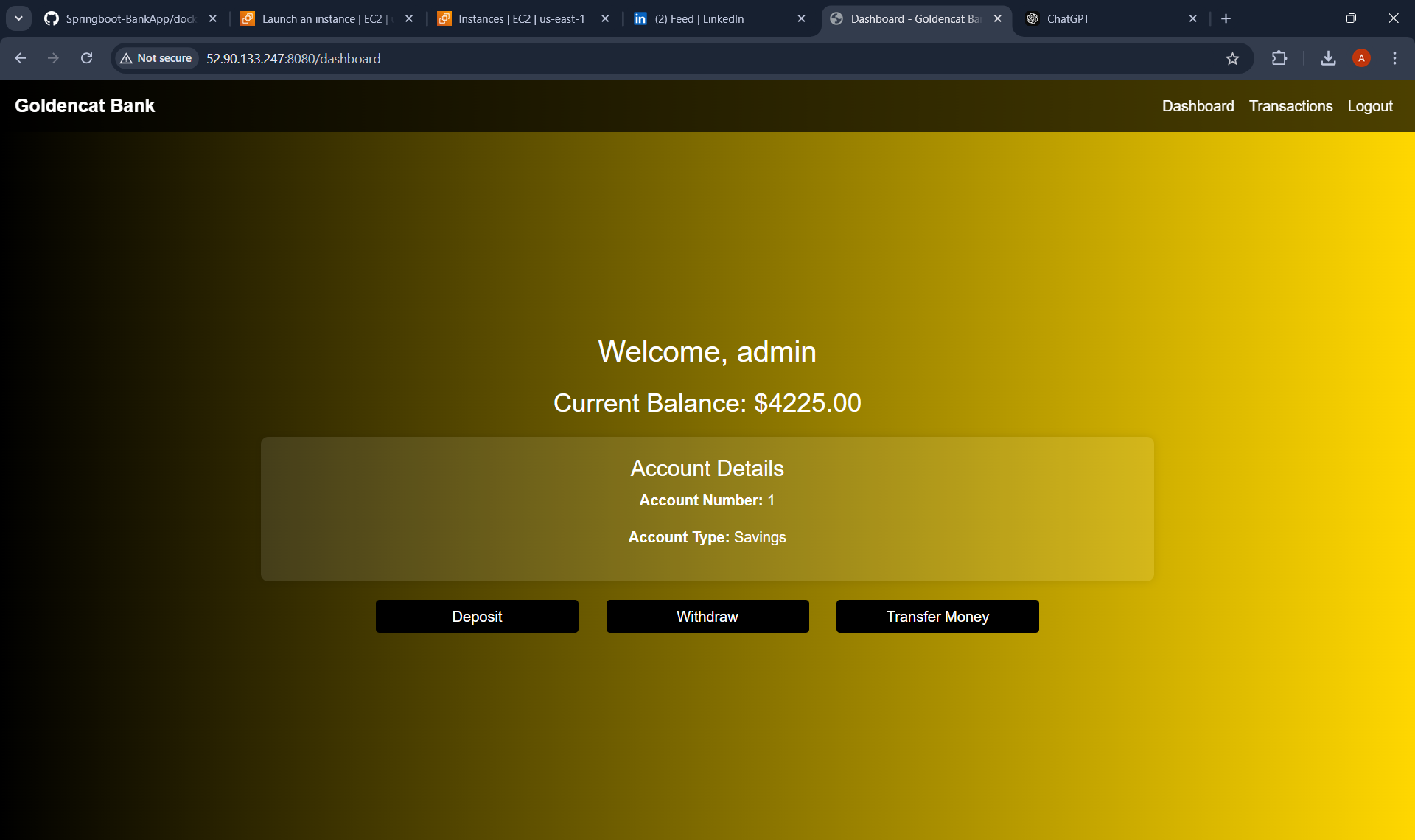
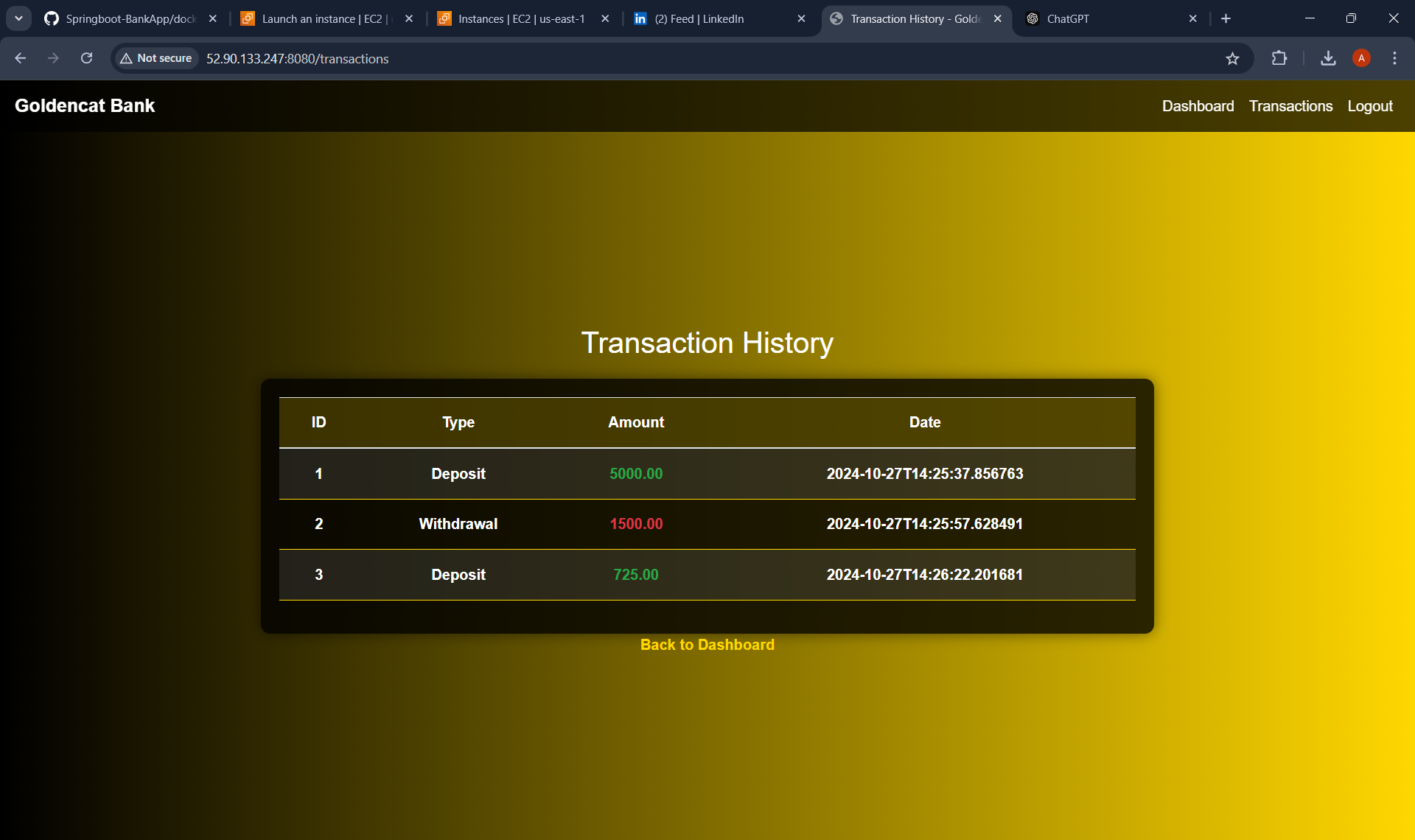
This setup efficiently organizes a multi-container banking application, separating concerns with a Docker multi-stage build and Docker Compose for simplified management. The application is scalable and can be deployed on AWS EC2 for real-world testing.
Subscribe to my newsletter
Read articles from Amitabh soni directly inside your inbox. Subscribe to the newsletter, and don't miss out.
Written by

Amitabh soni
Amitabh soni
DevOps Enthusiast | Passionate Learner in Tech | BSc IT Student I’m a second-year BSc IT student with a deep love for technology and an ambitious goal: to become a DevOps expert. Currently diving into the world of automation, cloud services, and version control, I’m excited to learn and grow in this dynamic field. As I expand my knowledge, I’m eager to connect with like-minded professionals and explore opportunities to apply what I’m learning in real-world projects. Let’s connect and see how we can innovate together!